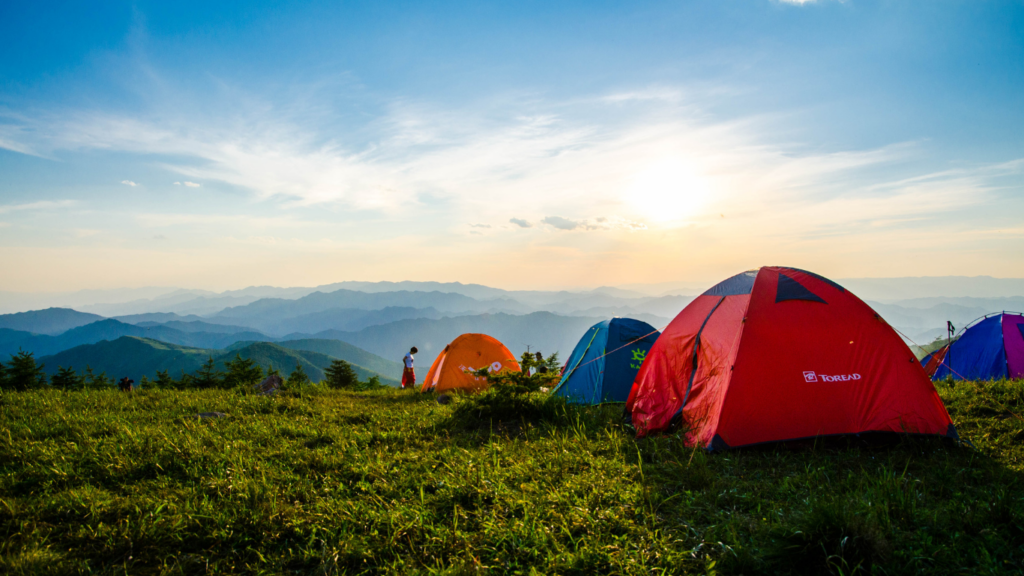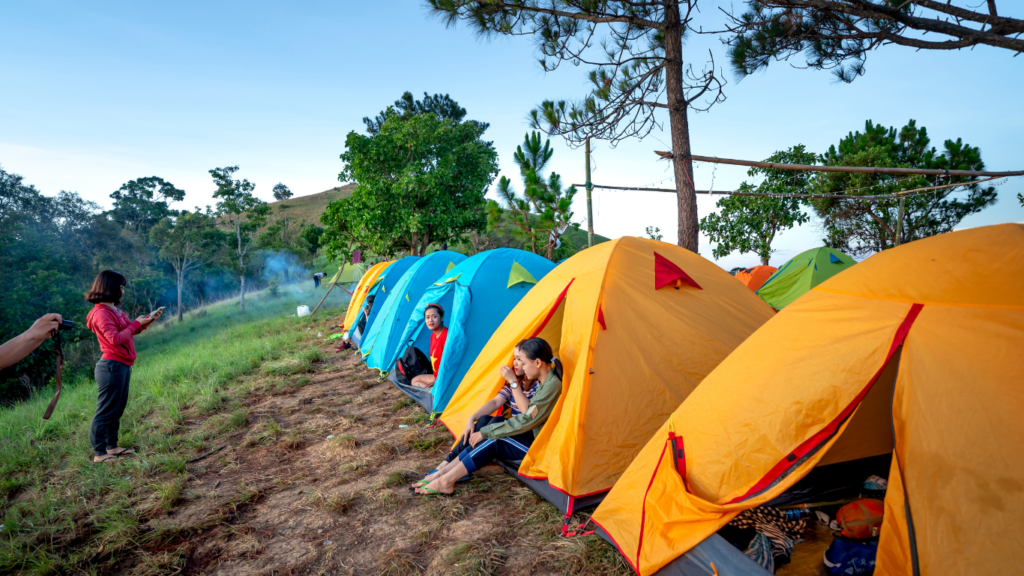Why Choosing the Right Tent Matters
Selecting the right tent impacts safety and comfort on the trail. A top-rated tent offers essential protection from harsh weather, keeping you dry during storms and securing you against strong winds. Poor-quality tents often fail to withstand these elements, leading to a compromised experience.
A well-designed tent enhances the overall outdoor adventure. It provides adequate ventilation to prevent condensation and ensures breathable air inside. Well-ventilated tents also minimize the risk of overheating during warmer conditions.
The right tent reduces setup time, which is crucial after a long day on the trail. Efficiently pitched tents allow more time for relaxation and recovery. Models with intuitive designs and fewer components simplify the setup process.
Space is a critical factor. A tent with ample room allows comfortable habitation, offering space for gear and movement without feeling cramped. Insufficient space can lead to clutter and an uncomfortable rest.
Consider the weight of the tent, as it directly affects mobility. Lightweight tents are beneficial in minimizing the load, making backpacking more enjoyable. Heavier tents can be cumbersome, draining energy and reducing hiking efficiency.
Durability can’t be overlooked. High-quality materials and robust construction extend a tent’s lifespan, providing reliability over many trips. Inferior tents may require frequent replacements, leading to higher long-term costs.
When selecting a tent, ensure it caters to specific needs like seasonality and terrain. Three-season tents, for instance, are geared towards spring, summer, and fall, while four-season tents are built for harsher winter conditions. Regularly used on diverse terrains, durable tents withstand rugged ground, ensuring stability.
Choose thoughtfully to optimize your outdoor experiences, guaranteeing safety, comfort, and reliability on every adventure.
Key Features to Look For in a Tent

When selecting a tent, several key features ensure a safe and comfortable outdoor experience.
Weather Resistance
Weather resistance is crucial for a tent’s performance. High-quality tents feature durable materials that withstand rain and wind. Look for a waterproof rating of at least 1,500 mm for rain protection, combined with a robust pole structure. Make sure seams are sealed and reinforced to prevent leaks.
Weight and Portability
Weight and portability affect how easily you can carry and set up your tent. Backpacking tents should weigh less than 5 pounds. Lightweight materials like aluminum poles and high-denier fabrics can help. Some models include compact designs, making them easy to pack.
Interior Space and Comfort
Interior space and comfort enhance your camping experience. Aim for at least 20 square feet of floor space per person. Dome or cabin-style designs offer more headroom. Ventilation options, such as mesh panels and adjustable rainflys, increase airflow and reduce condensation.
Ease of Setup
Ease of setup saves time and reduces frustration. Freestanding tents with color-coded poles and clips simplify the process. Pre-attached poles or quick-pitch systems can make setup faster. Practice at home to become more familiar with your tent’s setup process.
Top Rated Tents for Different Needs
Choosing a tent to fit specific camping needs improves the overall outdoor experience. The list below offers insights into the top-rated tents tailored for various camping scenarios.
Best Tent for Backpacking
For backpacking, finding a tent that balances weight and durability tops the list. The Big Agnes Copper Spur HV UL2 serves as an excellent example. Weighing just 3 lbs, it’s easy to carry on long trails. Its high-quality materials ensure weather resistance, with a double-wall design that prevents condensation build-up. Backpackers appreciate its quick setup and compact packing size.
Best Family Tent
When camping with family, space and comfort become primary concerns. The REI Co-op Kingdom 8 stands out in this category. It offers an impressive 104 square feet of floor space and a peak height of 75 inches. This spacious tent accommodates up to 8 people comfortably. Its two-room design provides privacy, and the vertical walls maximize interior space. Families benefit from the durable materials that offer excellent weather protection.
Best Budget-Friendly Tent
Budget-friendly options don’t compromise on quality and performance. The Coleman Sundome 4-Person Tent fits this need perfectly. Priced under $100, it offers reliable weather resistance with its welded corners and inverted seams. With a floor area of 63 square feet, it comfortably fits four people. Setup is simple and quick, taking about 10 minutes for one person. The Coleman brand is well-known for producing affordable and durable gear.
In-Depth Reviews of Top Rated Tents
I’ve analyzed some of the best tents available today to help you choose the right one for your next outdoor adventure. Each tent listed here has been rated highly for various factors, including:
- weather resistance
- comfort
- portability
Tent A
The Big Agnes Copper Spur HV UL2 is ideal for backpackers. It balances durability and lightweight, making it easy to carry without compromising on strength. The tent’s DAC Featherlite poles give it excellent stability in windy conditions. Ventilation is top-notch, ensuring you stay cool even in warmer climates. It also features two vestibules, giving you extra storage for gear.
Tent B
For families, the REI Co-op Kingdom 8 offers ample space and comfort. Its two-room design allows for better organization and privacy. The vertical walls maximize interior space, making it easier to move around. This tent also has multiple doors for convenient access and large windows for great ventilation. The setup process is straightforward, thanks to color-coded poles and sleeves.
Tent C
Budget-conscious campers will find the Coleman Sundome 4-Person Tent an excellent choice. Despite its affordability, it provides reliable weather resistance with its WeatherTec system, including inverted seams and welded corners. The tent sets up quickly—usually within ten minutes—and comes with large windows and ground vents to improve airflow. Its compact design makes it easy to transport.
Tips for Maintaining Your Tent
To keep your tent in top condition and ensure it lasts for many camping adventures, follow these maintenance tips diligently.
Cleaning and Storage
- Proper cleaning after each trip extends the lifespan of your tent.
- Shake out loose dirt and debris before packing.
- It’s best to spot-clean using mild soap and water for any stains or spots.
- Avoid using harsh chemicals which can damage the fabric.
- Once clean, air dry your tent completely to prevent mold growth.
- For storage, fold it loosely and keep it in a cool, dry place.
- Storing a tent while it’s damp can lead to mildew.
- Use breathable storage bags instead of the compression sack to maintain the tent’s material integrity.
Repairing Damage
Inspect your tent for damage after each use to address any issues promptly. Common issues include tears in the fabric, broken zippers, and bent poles. For fabric tears, use a patch kit specifically designed for tents. Apply seam sealer to ensure waterproofing remains intact.
If a zipper is sticking or has come off track, apply a silicone-based lubricant or repair with a zipper repair kit. Bent or broken poles need immediate attention, and you can often use a pole splint or sleeve to secure a temporary fix. For persistent issues, consider consulting the manufacturer’s repair service.




